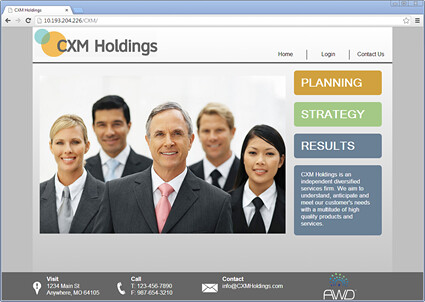I’m spending the last session of the last day at DST’s AWD Advance conference with Arti Deshpande and Karla Floyd as they talk about how their more flexible user experience came to be. They looked at the new case management user experience, which is research-driven and requires very little training to use, and compared it to the processor workspace, which looks kind of like someone strapped the Windows API onto a green screen.
To start on the redesign of the processor workspace, they did quite a bit of usability evaluation, based on a number of different channels, and laid out design principles and specific goals that they were attempting to reach. They focused on 12 key screens and the navigation between them, then expanded to the conceptual redesign of 66 screens. They’re currently continuing to research and conceptualize, and doing iterative usability testing; they actively recruited usability testers from their customers in the audience during the presentation. They’ve worked with about 20 different clients on this, through active evaluations and visits but also through user forums of other sorts.
We saw a demo of the new screens, which started with a demo of the existing screens to highlight some of the problems with their usability, then moved on to the redesigned worklist grid view. The grid column order/presence is configurable by the user, and saved in their profile; the grid can be filtered by a few attributes such as how the work item was assigned to the worklist, and whether it is part of a case. Icons on the work items indicate whether there are comments or attachments, and if they are locked. For a selected work item, you can also display all relationships to that item as a tree structure, such as what cases and folders are associated with it. Reassigning work to another user allows adding a comment in the same action. Actions (such as suspending a work item) can be done from the worklist grid or from the banner of the open work item. The suspend work item action also allows adding a comment and specifying a time to reactivate it back to the worklist – combining actions into a single dialog like this is definitely a time-saver and something that they’ve obviously focused on cleaning up. Suspended items still appear in the worklist and searches but are in a lighter font until their suspense expires – this saves adding another icon or column to indicate suspense.
Comments can be previewed and pinned open by hovering over the work item icon in the worklist, and the comments for a work item can be sorted and filtered. Comments can be nested; this could cause issues for customers who are generating custom reports from the comments table in the database, at least one of whom was in the audience. (For those of you who have never worked with rigid legacy systems, know that generating reports from comment fields is actually quite common, with users being trained to enter some comments in a certain format in order to be picked up in the reports. I *know*.)
The workspace gains a movable vertical divider, allowing the space to be allocated completely to the worklist grid, or completely to the open work item; this is a significant enhancement since it allows the user to personalize their environment to optimize for what they’re working on at the time.
The delivery goal for all of this is Q4 2014, and they have future plans for more personalization and improved search. Some nice improvements here, but I predict that the comments thing is going to be a bit of a barrier for some customers.
That’s it for the conference; we’re all off to the Hard Rock Café for a private concert featuring the Barenaked Ladies, a personal favorite of mine. I’ll be quiet for a few days, then off to bpmNEXT in Monterey next week.

